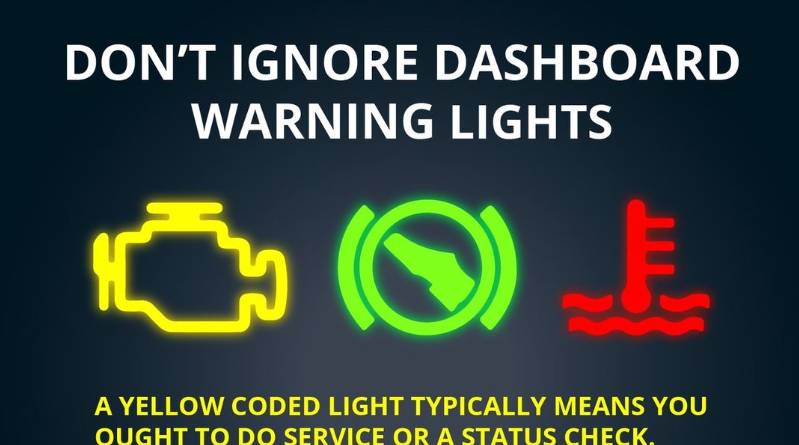Understanding Car Dashboard Warning Lights
Recognizing these symbols and understanding car dashboard warning lights meanings can help you take appropriate action to ensure your car remains in good working condition. Car dashboard warning lights play a crucial role in alerting drivers to potential issues with their vehicle.
Common Dashboard Warning Lights and Their Meanings
Red Warning Lights
Red warning lights indicate a serious issue that requires immediate attention. If you see a red light, you should stop driving as soon as it is safe to do so.
Amber or Yellow Warning Lights
Amber or yellow lights suggest that something needs to be checked by a mechanic soon, but it may not require immediate action.
Green and Blue Warning Lights
Green and blue lights typically indicate that a system is operating correctly and do not usually require any action.
Key Warning Lights to Watch Out For
Engine Warning Light

- Safe to Drive?
- Yes: If it’s steady and there’s no loss of power, but get it checked soon.
- No: If it’s flashing, stop driving as soon as possible.
- Next Steps: Get the engine checked to avoid potential damage to the catalytic converter or diesel particulate filter.
Battery Warning Light

- Safe to Drive? No, if the light is red while driving, as the battery isn’t charging.
- Next Steps: Stop the vehicle and contact a breakdown service. Avoid restarting the engine as it may worsen the problem.
- Possible Issues: Faulty wiring, alternator issues, or a flat battery.
Oil Pressure Warning Light

- Safe to Drive? No, you should stop immediately and check the oil level.
- Next Steps: Top up the oil if needed. If the light remains on, contact a breakdown service.
- Possible Issues: Oil pump failure or a blocked oil filter.
Brake Warning Light

- Safe to Drive?
- No: If the brake pedal feels soft or you need to press it further than usual.
- Yes: If the brake fluid level is okay and it might be a sensor fault.
- Next Steps: Check the brake fluid level and top up if necessary. Visit a garage if the light persists.
ABS Warning Light

- Safe to Drive? Yes, but take extra care, especially in wet or icy conditions.
- Next Steps: Have the ABS system checked by a mechanic soon.
- Possible Issues: Sensor fault or ABS system malfunction.
Diesel Particulate Filter (DPF) Warning Light

- Safe to Drive? Yes, but drive for around 10 minutes at over 40mph to clear the DPF.
- Next Steps: If the light remains, contact a breakdown service.
- Possible Issues: The DPF may be blocked and need replacing.
Airbag Warning Light

- Safe to Drive? No, as the airbag system may be malfunctioning.
- Next Steps: Have the airbag system checked by a mechanic.
- Possible Issues: Issues with the seatbelt link, damaged wires, or airbag faults.
Power Steering Warning Light

- Safe to Drive? No, as steering issues could lead to an accident.
- Next Steps: Drive carefully to the nearest garage for a check.
- Possible Issues: Low hydraulic fluid levels or a leak in the system.
Engine Temperature Warning Light

- Safe to Drive? No, pull over and check coolant levels.
- Next Steps: Top up coolant and drive again. If the light persists, get the car checked.
- Possible Issues: Low coolant levels or a more serious cooling system issue.
Tyre Pressure Warning Light

- Safe to Drive? Yes, but only to reach a garage.
- Next Steps: Inflate the affected tyre and monitor. If the light returns, check for a puncture.
- Possible Issues: Punctured or underinflated tyre.
Electronic Stability Programme (ESP) Warning Light

- Safe to Drive?
- Yes: If flashing in slippery conditions.
- No: If on in normal conditions.
- Next Steps: Get the ESP system checked by a mechanic.
- Possible Issues: Fault in the ESP system.
Brake Pad Warning Light

- Safe to Drive? No, as worn brake pads can reduce braking efficiency.
- Next Steps: Replace brake pads at the nearest garage.
- Possible Issues: Worn brake pads.
Diesel-Specific Warning Lights

- Glow Plug Indicator: Wait for it to go out before starting the engine.
- AdBlue Tank Empty: Refill the AdBlue tank.
- Fuel Filter Warning: Empty the diesel fuel filter.
- Water Fluid Filter Warning: Empty water from the system.
- Exhaust Fluid Warning: Refill the diesel exhaust fluid reservoir.
- AdBlue Malfunction: Have the system checked.
General Advice for Warning Lights
- Yellow Warning Lights: Get the issue checked soon.
- Red Warning Lights: Stop driving and seek help immediately.
- Most Serious Lights: Check engine light, oil pressure warning light, and brake/ABS warning lights.
How to Reset Warning Lights
While turning off the engine and restarting may reset some lights, it’s crucial to have warning lights checked by a mechanic to address underlying issues properly.
Understanding your car’s warning lights can help prevent serious damage and ensure you stay safe on the road.
Buying a used VW. Buying used vauxhall, BMW, Jaguar, Ford, Volvo, Range rover, Bentley, Aston Martin, Porsche, Ferrari, Lamborghini, Maserati, Hyundai, Tesla, Honda, Pagani

